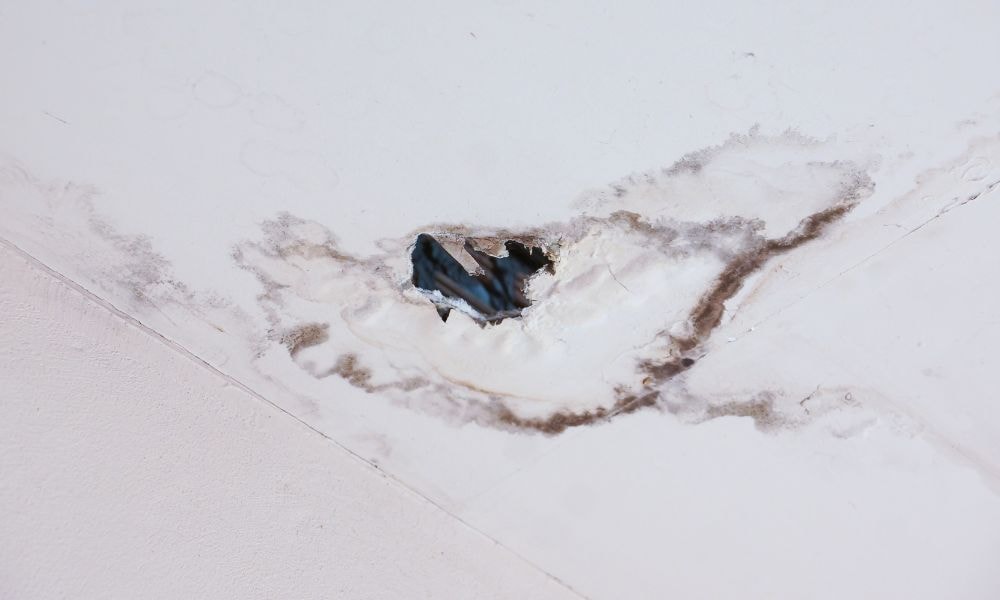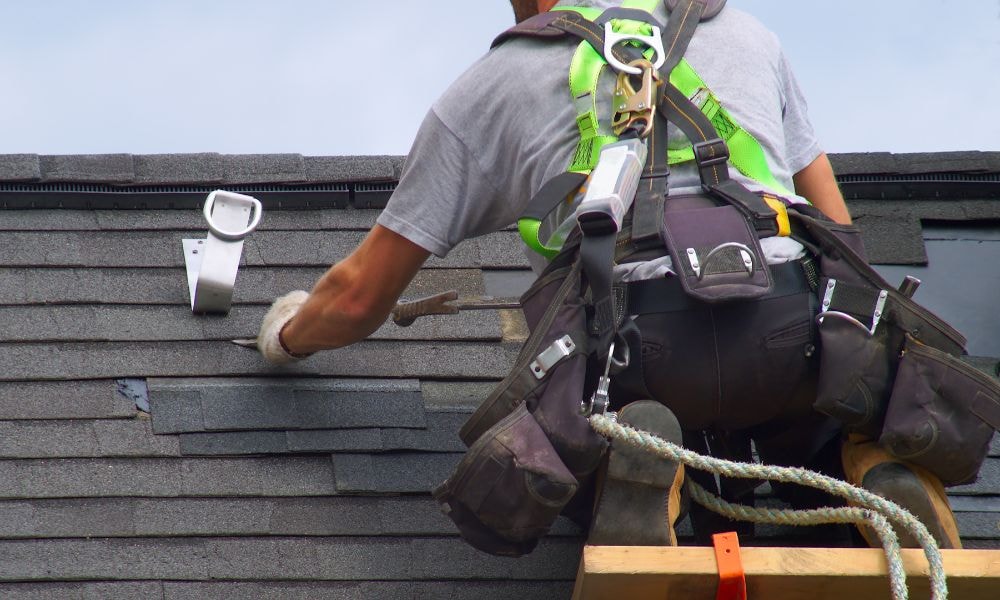What Will Happen If Rainwater Gets Into Attic Vents?
Explore The Risks And Solutions For Rainwater Entering Attic Vents, Including Prevention Tips And Repair Strategies To Protect Your Home.
- Immediate Consequences of Rainwater Entry
- Water Damage to Insulation
- Structural Damage
- Increased Humidity Levels
- Long-Term Effects of Rainwater in Attic Vents
- Signs That Rainwater Has Entered Your Attic
- Preventative Measures
- Regular Inspection and Maintenance
- Proper Vent Installation
- Upgrading Attic Ventilation
- Addressing Rainwater Damage
- Costs Associated with Rainwater Damage
- Estimating Repair Costs
- Insurance Considerations
- Potential Impact on Home Value
- Long-Term Effects on Property Value
- Steps to Restore Home Value
- Final Thoughts on Protecting Your Attic from Rainwater
Explore the risks and solutions for rainwater entering attic vents, including prevention tips and repair strategies to protect your home.
During a rainstorm, you can sometimes hear a mysterious dripping sound but couldn't figure out where it was coming from. It could be a sign of an issue in your attic. Attic ventilation plays a role in maintaining the health of your home, allowing hot, moist air to escape and cooler air to be drawn in, which helps prevent issues like mold and structural damage. This system typically includes various types of vents, such as ridge vents along the peak of your roof, soffit vents under the eaves, gable vents at the ends of your home, and turbine vents that use wind power to draw air upwards and out.
However, if these roof vents are improperly installed or if severe weather wreaks havoc, rainwater can make its way into your attic with ease. A poor vent design, lacking a drip edge or improperly placed, invites water instead of repelling it, while neglected maintenance can lead to seals and barriers breaking down over time.
Understanding these common entry points and the vital role of correctly installed gable vents and other ventilation systems. Ensuring everything is installed properly with a robust maintenance plan can save you from the headache of unexpected repairs and maintain the integrity of your attic—and your peace of mind.
Immediate Consequences of Rainwater Entry
When rainwater finds its way through your attic vents, the immediate consequences can range from subtle to significantly damaging, impacting everything from insulation to the very structure of your home.
Water Damage to Insulation
The types of insulation most commonly found in attics such as fiberglass, cellulose, and spray foam are all susceptible to water damage. When water penetrates through a gable vent or roof vent, it can saturate these materials, drastically reducing their insulation efficiency and R-value. This not only compromises the thermal barrier of your home but can also lead to increased heating and cooling costs.
Structural Damage
Wooden beams and rafters that support your roof and attic floor are not immune to the effects of moisture. If the vent pipes are not properly installed or if a drip pan is absent, water can cause these wooden structures to deteriorate. Moreover, any metal components within the attic, such as nails and brackets, can begin to rust and corrode, further weakening the structural integrity of your home, especially after heavy rain.
Increased Humidity Levels
The entry of rainwater through compromised vent areas affects the materials directly wetted and increases the overall humidity levels in your attic. This heightened moisture environment can drastically impact indoor air quality and lead to the formation of condensation on windows and other surfaces, causing additional water damage and potentially leading to more severe issues if not addressed with proper installation and maintenance.

Long-Term Effects of Rainwater in Attic Vents
The long-term effects of rainwater entering attic vents can be detrimental to the safety and structural soundness of your home. Moisture accumulation, often exacerbated by wind-driven rain and improper installation of internal baffles, creates ideal conditions for mold and mildew growth, posing serious health risks and deteriorating air quality. Prolonged exposure to this moisture leads to wood rot in critical structural elements like joists and trusses, increasing the risk of structural failure.
Water infiltration into the vent area can also reach electrical systems, risking short circuits and fire hazards, mainly if new vents are not installed correctly. These ongoing issues highlight the importance of addressing water entry promptly and ensuring all components are properly maintained and installed to protect your home from these severe consequences.
Signs That Rainwater Has Entered Your Attic
Detecting early signs of rainwater intrusion in your attic can save you from costly repairs and structural damage. Here are a few indicators that water may be seeping into your space:
Visible Water Stains: If you notice unsightly stains on the ceilings, walls, or insulation, it's a clear sign that water has infiltrated your attic. These stains often appear darker and might expand after a storm, indicating where water is dripping through a new vent or existing gaps.
Musty Odors: A persistent musty smell strongly indicates moisture problems in your attic. This odor often originates from damp or moldy materials and requires immediate attention to locate and eliminate the source of moisture.
Increased Energy Bills: An unexpected rise in your heating or cooling costs can be a symptom of compromised attic insulation. Moisture can reduce insulation's efficiency, forcing your HVAC system to work harder to maintain comfortable indoor temperatures, especially after incidents of dripping water or during stormy weather.
Preventative Measures
Effective preventative strategies are essential to safeguarding your home against rainwater damage through attic vents.
Regular Inspection and Maintenance
Set a routine for inspecting attic vents and assessing the roof’s condition. Your checklist should include checking for blockages, signs of rust or damage, and securing all seals. Regular maintenance, especially before and after severe weather, helps avert common problems that lead to water intrusion.
Proper Vent Installation
Always engage professionals for attic vent installation to avoid future complications. Experts apply best practices for waterproof installations, such as optimal vent placement and the use of durable, weather-resistant materials. Proper installation from the outset significantly reduces the likelihood of water damage.
Upgrading Attic Ventilation
Consider newer vent designs that provide better protection against water ingress. Adding vent covers and rain guards enhances your attic’s ventilation system, ensuring proper airflow while blocking water entry. These improvements are particularly valuable in areas frequently experiencing heavy rain and storms.

Addressing Rainwater Damage
If rainwater enters your attic, act swiftly to mitigate damage and prevent long-term issues. Start by drying out the area thoroughly to halt further water impact. Next, assess and replace damaged components such as insulation and wooden structures to restore the integrity of your attic. Mold remediation is also vital; remove all mold growths promptly and safely to maintain air quality and prevent health risks. These steps, when executed promptly, can significantly reduce the potential for extensive damage and costly repairs.
Costs Associated with Rainwater Damage
Managing the costs associated with rainwater damage is essential for homeowners.
Estimating Repair Costs
The financial impact of attic water damage varies significantly between minor and major repairs. Costs depend on the extent of damage, the materials required for repairs, and the labor involved. Minor fixes may be relatively inexpensive, but extensive damage involving structural repairs can escalate costs quickly.
Insurance Considerations
Familiarize yourself with your home insurance policy to understand what types of water damage are covered. Most policies cover water damage under specific circumstances, but knowing the details is crucial. For water damage claims, document the damage thoroughly and contact your insurance provider promptly to initiate the claims process effectively.
Potential Impact on Home Value
Rainwater damage in the attic can significantly impact your home's market value.
Long-Term Effects on Property Value
Unresolved water damage can decrease home value, as potential buyers often view such issues as a sign of neglect and potential future expenses. Disclosing any known attic issues during the sale process is essential to ensure transparency and avoid legal complications.
Steps to Restore Home Value
To restore and possibly enhance your home’s value, repair and certify the attic space to confirm that it meets safety and health standards. Additionally, obtaining a professional home inspection report can provide proof of the attic’s condition and the repairs made, which is valuable information for potential buyers and can aid in maintaining your home's market value.
Final Thoughts on Protecting Your Attic from Rainwater
Protecting your home starts in places you don’t often see, like your attic. Rainwater entering through attic vents poses several risks, including structural damage, decreased air quality, and potential health hazards from mold. Regular checks and timely repairs are crucial to prevent these issues and ensure the longevity and safety of your home.
Staying proactive with maintenance and promptly addressing any signs of water intrusion can significantly mitigate these risks. It's advisable to engage with professionals for assessments and repairs to ensure all work is thorough and up to code. Taking these steps protects your home and maintains its market value, providing peace of mind that your safe haven remains secure and sound.

